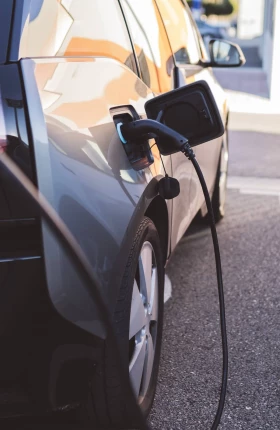The automotive industry is no stranger to surprises. Disruptions come on many fronts, including consumer preferences. We surveyed more than 9,000 consumers in ten countries to find out what they think about and what they want when buying a vehicle. We’ve distilled their responses to capture five actionable (and perhaps surprising) takeaways on:
- Chinese brands’ move to the worldwide stage
- Power train choice
- Brand loyalty
- Autonomous vehicles
- The allure of digital features
Consumer preferences reflect profound competitive changes that demand urgent responses from OEMs. Competition is heated, with fuel coming from new sources. For example, Chinese OEMs have global ambitions and are exporting record numbers of vehicles—which they can sell at highly competitive prices, thanks to the companies’ high speed of innovation, structural cost advantages in the battery supply chain, various government supports and incentives, and low labor and energy costs. Other big shifts: a once global industry is becoming a multiregional one, requiring new consumer insights and strategies. The move from ICE to electrified power trains continues to accelerate (especially among younger age groups), with fully electric vehicles (battery electric vehicles; BEVs) claiming a 15% share of global new-vehicle sales in 2025, up from 6% in 2021. Autonomous-driving features are becoming more commonplace and more widely accepted—Waymo completed its 10 millionth driverless ride in June of this year.
OEMs should not take their eyes off the strategic road. The next five years will be critical for the global automotive industry. After all, about 35% of surveyed US and European respondents and 73% of Chinese respondents told us they plan to buy a BEV within the next five years—and that includes consumers who currently drive ICE vehicles. (See “About Our Survey with NielsenIQ-GfK.”)
In the automotive industry, resilience is requisite. OEMs must flex yet again to produce vehicles and vehicle-buying experiences that appeal to consumers. Here are insights with near- and longer-term relevance to help strengthen those muscles.
More Consumers Are Open to Buying Chinese-Branded Vehicles
Just 7% of US consumers told us that they would consider buying a Chinese-made vehicle. (See Exhibit 1.) For US OEMs, this might be a comforting statistic, but it’s not one that should suggest complacency. Chinese OEMs are expanding vigorously—according to data from the China Association of Automobile Manufacturers, China exported 4.95 million vehicles in the first nine months of 2025, up approximately 15% from the same period in 2024. And the global landscape continues to evolve, with consumers in multiple countries displaying greater openness to Chinese vehicles.

In Brazil, for example, 36% of survey respondents would consider buying a Chinese vehicle—a compelling statistic for Chinese OEMs that have opened manufacturing sites in Brazil (including local BEV market leader BYD as well as Great Wall Motor and Chery), a potential gateway to the Latin American markets broadly. Brazil represents a prime market for Chinese OEMs: it lacks large domestic automotive brands, its population emphasizes cost when making purchases (and thus will favor lower-cost Chinese vehicles), and it is not engaged in the kind of geopolitical tensions that characterize US-China relations.
And in Europe, 10% to 20% of consumers are open to buying Chinese vehicles. That interest is stronger than current sales suggest (market share is 4% on average across the EU), indicating a potential window for growth. Chinese OEMs can open that window, primarily by carefully considering a go-to-market approach that will expand their brand presence, recognition, and reliability and build an aftersales infrastructure. They’ll need patience as well, to establish a track record and overcome geopolitical and social concerns.
In China, buying a foreign brand was traditionally considered a status symbol, but 85% of Chinese consumers are now open to purchasing domestic vehicles.
In China itself, buying a foreign brand was traditionally considered a status symbol, but our survey found that 85% of Chinese consumers are now open to purchasing domestic vehicles, which will command a 69% market share this year and, we believe, a larger share in the future.
Bear in mind: All of these statistics are power train agnostic—an important consideration given that consumers are gravitating toward battery-powered vehicles (which we’ll discuss next), and given that Chinese OEMs are prominent suppliers of electric vehicles at competitive prices. Global openness to Chinese vehicles and the market share of Chinese vehicles are likely to climb over time.
The Move Toward Battery-Powered Vehicles Is Slow but Steady
Customers are “sticky.” When we asked about their next vehicle purchase, they generally said they would choose one with the same engine type as the vehicle they are currently driving. For instance, the majority of people who drive vehicles powered by internal combustion engines (that’s most people; ICE vehicles hold a 65% share of the market globally) said they would choose a subsequent vehicle with the same power train. (See Exhibit 2.)

But at the same time, the road toward BEVs is open. More people plan to switch from ICE and hybrids to BEVs than from BEVs back to other engine types. And 71% of current BEV drivers plan to choose a BEV again for their next vehicle, suggesting high satisfaction and long-term commitment. In contrast, only about 50% of respondents currently driving a vehicle with a different (non-BEV) power train plan to choose the same engine again.
While environmental concerns are a top motivator for choosing BEVs across all three major regions, in the US and China the largest factor is access to advanced technology and features (cited by 51% and 47% of respondents, respectively). In Europe, the biggest consideration (47%) is financial savings.
Still, a surprising share of consumers remain adamantly opposed to BEVs, particularly in the US and Europe. We note that where opposition is highest, BEV market share is lowest. (See Exhibit 3.)

Over time, however, BEVs will likely secure greater ownership given that younger generations are more likely to favor them.
The BEV market is wide open. OEMs have plenty of opportunities to boost adoption.
For example, in the US, 28% of survey respondents who own ICE or hybrid vehicles told us they would never switch to a BEV. But when we look at respondents by age group, we see that only 10% of US 18- to 30-year-olds are “never BEVers.” In contrast, 39% of US respondents aged 61 or older said they would never buy a BEV.
The patterns are similar in Europe, where an overall 24% disavowed BEV ownership.
China is markedly different: just 6% of respondents said they would not buy a BEV. In China, people are open to these vehicles, which they see frequently on the road and hear about from friends, families, and colleagues who own them. BEVs will command a 30% market share in the country this year and likely a larger share in years to come. Regulations and competitive moves are reinforcing the acceleration toward BEV ownership: in some cities in China, registration of an ICE vehicle is restricted, and for consumers who want the latest features and technologies, BEVs are the clear choice.
All of this indicates that the BEV market is wide open. OEMs have plenty of opportunities to boost adoption—particularly given that the core reasons for avoiding BEVs are rooted in long-held misconceptions. For example:
- Consumers are put off by what they regard as long charging times. But vehicles on the newest platforms can now be charged very quickly. BMW’s Neue Klasse, for example, can charge from 10% to 80% within 21 minutes. And BYD’s new ultra-fast-charging technology, launched as part of the Han L in 2025, can charge 400 kilometers within just five minutes.
- Consumers also worry about having sufficient driving range on battery power—but they tend to overestimate the range that they really need. While the average daily mileage driven in Europe is only 30 kilometers per day, for instance, many new EVs already have driving ranges of 500 or more kilometers—more than sufficient not only for daily use but also for longer trips.
- High upfront purchase costs are a well-known deterrent, but overall cost will continue to come down, tracking the ongoing drop in the cost of battery cells—the most expensive component of a BEV. For example, Volkswagen announced that it plans to bring a €20,000 BEV to market by 2027. Such decreases would put ICE and BEV options on par in terms of upfront purchase cost.
- Consumers are also concerned about a perceived lack of charging infrastructure, but according to the International Energy Agency, the number of global public charging points has nearly doubled in the past two years alone and continues to grow. While more charging points, especially more rapid chargers, are needed and the proliferation is very different across countries (most are in China, followed by Europe) and between urban and rural areas, the direction is clear.
By bridging trust gaps, upgrading infrastructure, and tailoring messaging to different regional mindsets, OEMs can win converts to fully electric vehicles.
Chinese firms are poised to take advantage of this shift in preference. Many are already pursuing overseas growth to counter domestic oversupply and price wars. The China Association of Automobile Manufacturers reported that in the first nine months of 2025, China’s export of new-energy vehicles (NEVs, a category comprising BEVs and plug-in hybrid vehicles) reached 1.76 million units, jumping more than 89% year on year. These companies will gain market share with competitive pricing—an advantage over European and US OEMs, which have found the high upfront purchase cost of an EV to be a key and consistent barrier to EV uptake.
Stay ahead with BCG insights on the automotive industry
Brand Loyalty Is Waning
Incumbents can’t rely on customer loyalty. (See Exhibit 4.)
OEMs with a strong market share in Germany will be pleased to know that brand loyalty is higher there than in any other country we surveyed: 47% of mass-market and 53% of premium customers intend to repurchase their current brand. But this survey result also indicates that even in Germany, about half of all consumers intend to choose a different brand when they make their next purchase.
Across regions, younger consumers indicate less loyalty than older consumers.
Across Europe and the US, roughly 40% of respondents are intent on repurchasing a make from their current brand. Conversely, almost two-thirds plan to buy a different brand.
In China, brand loyalty is starkly lower: only about 10% of consumers plan to stand by their current brand—which is not surprising given the plethora of technologically advanced and nonetheless quite affordable vehicles on offer. Also, many Chinese EV brands are young; they have not had time to build a loyal customer base. This creates opportunities for new entrants and emerging brands and poses a challenge for established OEMs.

The low levels of loyalty elsewhere in the world might be a boon for Chinese OEMs. Consider that 10% to 20% of European consumers said they are currently open to buying a Chinese vehicle. If the financial motivation for greater value outweighs brand loyalty, openness to Chinese brands might increase.
Customer loyalty seems set to erode further. Across regions, younger consumers indicate less loyalty than older consumers. (See Exhibit 5.)

We note that in China, the age of the average new-vehicle buyer is mid-thirties; in the US and Europe, it’s early fifties. So, the age-related trend away from loyalty is already being felt in China but will have an increasing effect in the US and Europe in the future.
In sum, established OEMs from any region cannot overly rely on brand equity. What they can do: evaluate the reasons behind customer churn and invest in competitive products and services. With the rise of BEV-native brands, price-driven innovation, and digital ecosystems (which we’ll discuss later), they must continuously innovate and reinforce their relevance.
Autonomous-Driving Features Are Winning Fans
Thanks to experience, people are acknowledging the value of autonomous-driving features: 79% of survey respondents who drive vehicles that feature semi- or highly automated features said that the features are useful. Even among those who don’t currently drive such vehicles, 45% acknowledge that the features are useful. (See Exhibit 6.)

Our findings indicate specific challenges for OEMs when it comes to bringing autonomy to market. It’s hard to argue with the primary reason for not wanting to adopt autonomous-driving features: most consumers who object said they do so simply because they enjoy driving and don’t want to give up that experience and freedom. And the fragmented openness to autonomous driving across regions means that differentiated go-to-market strategies will be required: OEMs will have to accelerate deployment in innovation-forward markets like China while providing education and reassurance in US and European markets.
OEMs can find ways to address many consumer reservations about vehicle autonomy.
Certainly, though, OEMs can find ways to address many consumer reservations about vehicle autonomy, such as lack of trust in the technologies, failure to see the need for the features, and the perceived cost of repairing vehicles that come with autonomous-driving features.
On a regional basis, consumers remain sharply divided about riding in fully autonomous vehicles. More than 60% of consumers in China are open to riding in a fully autonomous taxi. (See Exhibit 7.) US and European consumers are less keen. Varying levels of openness to innovation could explain the regional differences.

Nonetheless, autonomous ventures by Waymo, Uber, and Tesla continue to expand in the US, suggesting an eventual market opportunity. And regulatory frameworks signaled by the EU and the UK to help drive implementation may open up opportunities for OEMs looking to enter those markets with autonomous-driving features: the EU has announced a plan to advance autonomous vehicles via multiple “cross-border test beds” and “regulatory sandboxes,” starting in 2026, and the UK launched an initiative in July to help drive AV implementation.
Digital Options Appeal to Consumers
Digital tech is ubiquitous—at work, at home, and increasingly in vehicles.
The Digital Influence on Infotainment. Our survey revealed that consumers are interested in particular digital ecosystems to power their personal choices regarding connectivity, music, and more. (See Exhibit 8.) The takeaway: consumers want multiple options: Android and Apple and OEMs’ proprietary offerings. OEMs are advised to offer all relevant ecosystems and not to skimp on developing their own robust ecosystems, to ensure a premium customer experience.

For now, at least, OEMs face some challenges in terms of which options are available in which regions. For Chinese OEMs, the proliferation of options could pose a challenge. Among them:
- Baidu’s CarLife
- Flyme Auto
- AliOS
- Huawei’s HiCar
- Xiaomi Universe / HyperOS
- Tencent Auto Intelligent System
In addition, Western OEMs that want to operate in China may develop their own ecosystems. In sum, OEMs must thoroughly evaluate the ecosystems they will offer in order to deliver a superior customer experience.
The Digital Influence on Service. Over-the-air (OTA) updates—to adaptive lighting, navigation offerings, camera capabilities, and more—have been an option on some vehicles for years. Consumers want these updates. (See Exhibit 9.)

The problem? Many vehicles are not OTA ready. Given the level of consumer desire for this technical capability, lack of OTA readiness is a big problem for OEMs selling vehicles in Europe and the US. For OEMs selling vehicles in China, where the demand for OTA updates is highest, lack of OTA readiness is fatal.
Regardless of region, OTA capabilities will be crucial going forward. OEMs should invest in the next generation of E/E architectures and should not compromise when it comes to offering full OTA capabilities.
Ultimately, vehicles that lack OTA options may end up being unsellable.
The Digital Influence on Buying. OEMs should consider how consumer interest in technology is influencing purchasing habits. It’s no longer just what to buy but also how to buy.
Consumers are increasingly interested in buying vehicles online. Our survey found that a considerable 31% share of respondents are interested in purchasing their next vehicle fully online (without personally inspecting the vehicle). Age plays a role: 44% of 18- to 30-year-olds are open to a fully online purchase. (See Exhibit 10.)

This appetite for online buying indicates a need for future strategies that will accommodate it.
In the near term, though, the focus should be on hybrid buying experiences, given that consumers currently rely on both physical touch points (dealerships) and digital influences (social media recommendations) to shape their purchasing decisions. Engagement strategies should be tailored to demographic differences, as we’ve seen, and to regional differences: In the US, China, and Norway, most consumers said they rely on social media recommendations rather than information from dealerships when making decisions about buying a vehicle. Conversely, in most of Europe and in Brazil, the majority of consumers rely primarily on information from dealerships.
But even in markets where dealer trust is dominant, 30% to 40% of respondents cite social media as their primary influence. Social media platforms are gaining ground, at a time when the trend among OEMs has been to move toward direct retail. OEMs might find that they can differentiate themselves by developing a strategy to play on social media platforms.
Evolving consumer preferences should be factored into OEMs’ current strategy making. Younger generations are more open to buying Chinese vehicles. They are more inclined to buy BEVs. They are more likely to eschew brand loyalty. They are more open to autonomous-driving features. They are more interested in digital options—such as ecosystems, OTA features, and online purchasing—related to vehicles.
OEMs must find ways to meet the needs of the new generations of vehicle buyers, and they must do so soon. Our survey results indicate that major changes will play out within five years. In that time frame, consumers intent on buying vehicles will look to buy from the brands that give them what they want.
The authors thank their survey partner, NielsenIQ-GfK—in particular, François Le Gunehec and Jann Kirn. They also thank their BCG colleague Paul Kerckhoff for his contributions to survey analysis.
About This Study
The findings shared in this publication were gathered over June and July 2025 via an online survey (CAWI: Computer Assisted Web Interviews).
Our sample comprised more than 9,000 respondents, who either currently owned a car or intended to buy a car. It covered more than 50 questions.
The survey covered ten geographic markets: Brazil, China, France, Germany, Italy, Netherlands, Norway, Spain, UK, and US.
Our survey sample was diverse:
- A 50-50 gender split
- Inclusion of all age groups, from age 18 to age 61+
- Respondents who currently own vehicles with each of the relevant power trains: internal combustion engine (ICE), non-plug-in hybrid, plug-in hybrid, and battery electric vehicle (BEV)






